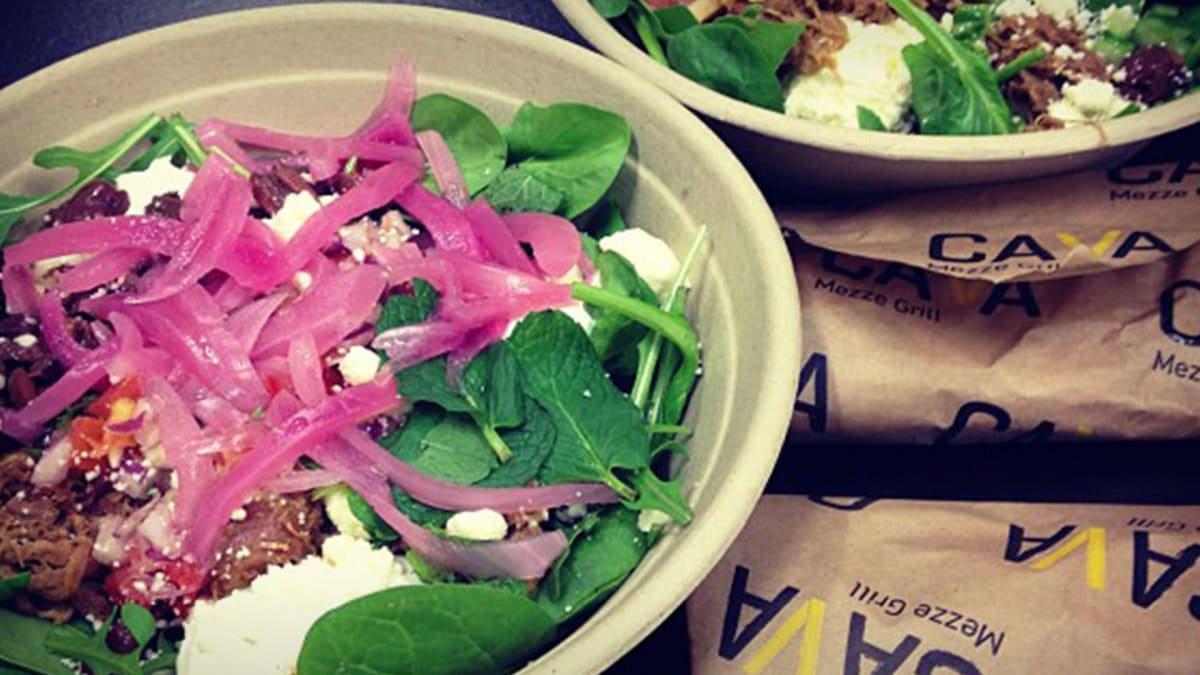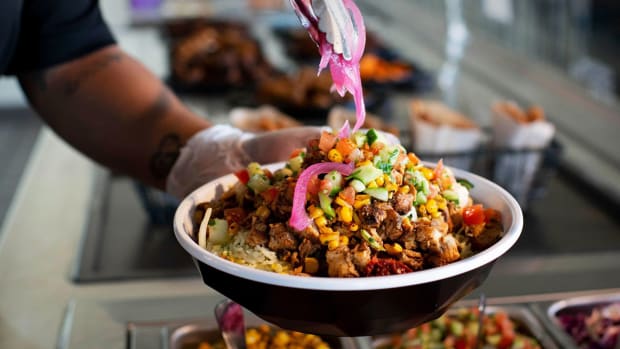
With a massive slowdown in restaurant companies going public over the last year, the investing space has been consumed with the much-anticipated Cava IPO.
The D.C.-based chain of Mediterranean fast-casual restaurants had earlier raised its pricing range to $22 a share from an earlier $19 to $20 and initial $17 to $19. After officially debuting the CAVA ticker on the New York Stock Exchange on June 15 at $42 a share, stock immediately soared by nearly 110%.
DON'T MISS: Mediterranean Restaurant Chain Cava Sets IPO at $22-Share
The excitement around it has much to do with the chain's rapid growth and potential. Even with a reported net loss in the last two fiscal years, the success of the IPO brought the company's valuation to more than $4.6 billion.
This Is What You Need to Know About Cava's NYSE Debut
In an exclusive interview, Chief Financial Officer Tricia Tolivar talked to TheStreet about the long road to going public and plans to grow the company further. The talk has been edited for length and clarity.
TheStreet: How does it feel to make your NYSE debut? There has been much lead-up and anticipation in the last few months.
Tolivar: It's an exciting day and truly spectacular to have our team members here together at the NYSE to celebrate. But what's even more exciting is the ability to bring Cava to more and more people across the country and continue to deliver our cuisine in a meaningful way.
From 2011 to today, we were able to continually grow and acquire restaurants. We acquired Zoe's Kitchen along the way and converted those locations into Cava locations very successfully. That brought us to 263 restaurants at the end of the first quarter in 22 states and the District of Columbia. I really see a tremendous opportunity to continue to take the brand further. I think we've demonstrated proven profitability in all types of geographies and formats both suburban and urban.
You raised $318 million through the IPO. Where will you direct these funds?
Our balance sheet prior to the raise was very strong. At the end of the first quarter, there was no debt outstanding [as well as] access to a $75 million revolver, a $25 million accordion and a $30 million delayed draw term loan (DDTL) for the construction of our manufacturing facility. This capital gave us the confidence to be able to grow without that additional raise but what this allows us to do is really put more cash on the balance sheet and create some opportunity if we wanted to lean in a different way. Plus, our guests have been asking us to go public.
The build-a-bowl concept has been popularized over the last two decades by competitors like Chipotle and Sweetgreen. Do you feel that your Mediterranean focus is what helped you carve out a niche in this industry? In your SEC filing last January, you mention it as a fast-growing food category.
You know, the Mediterranean diet has been in existence for 4,000 years and I think people are really just beginning to understand how wonderful it is to not have to feel like you're making sacrifices when you're eating. As American palates become more diverse, [consumers] are exploring bold flavorful adventures and our food lends to that really nicely.

Cava
'Cuisine For Our Guests and Returns For Our Shareholders'
Our food is also highly customizable. Through 38 ingredients, you can have 17.4 billion combinations. Whether you're vegetarian or flexitarian or dairy-free, you can come to Cava and find something. Or if you just want meatballs and crazy feta, we have that too.
The chains mentioned above had very different paths after their IPO. How will you ensure that current growth and investor excitement are maintained in the long-term?
What we really focus on is the restaurant level margins and the profitability of those restaurant levels. That is the oxygen of our business and it is strong and growing. We've made investments in our infrastructure already to position us for growth in the future and so that we can leverage those over time.
There was certainly a healthy appetite for investments like ours. We're a category defining brand with high unit level economics and credible whitespace opportunity and an infrastructure that's there to sustain the growth. We're pleased by what we saw on the market, but what we're more excited about is really what we can do as we move forward and continue to execute on our strategy of delivering amazing cuisine and hospitality to our guests and returns for our shareholders.
It's a tough time both for eating out and the restaurant industry. Are your average bowl prices standardized across the country? And do you feel that you'll be able to maintain that balance between being an affordable option and profit going forward?
We have a number of different price zones across the country. They vary a little bit by region and we generally look at those prices twice a year. We're very focused on value and what it means for our guests and last year we only raised our menu prices in restaurant by less 5%. We were able to do the do that and still deliver expanded restaurant-level profit margins without having to put it on the burden of our guests. We don't intend to make any more significant price increases but we'll constantly monitor the markets and how we're being received by our guests.







